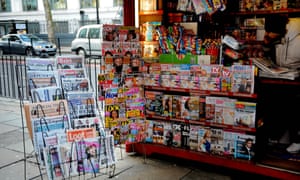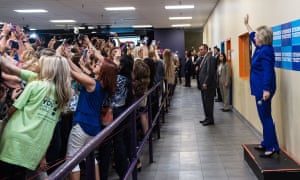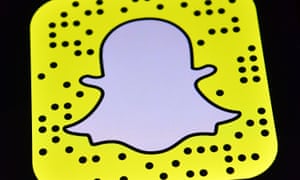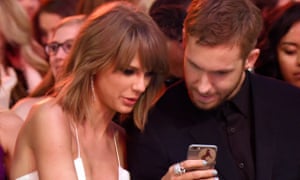1) What are the most popular platforms for audiences to access news and how has this changed in recent years?
The most popular platforms for audiences to access news are, local news, and news consumption in the
nations.
However, this form of accessing news has changed over the years, Television is by far the most-used platform for news, with 67% of UK adults saying they use
TV as a source of news. However, there has been an eight percentage point decrease since
2014 (75%), following a three percentage point decrease between 2013 (78%) and 20143
.
The number of people who use the internet or apps for news has remained the same since
2014, with just over four in ten (41%) doing so, compared to just under a third in 2013 (32%).
Newspapers are used by three in ten (31%), which represents a decrease of nine
percentage points since 2014 and 2013 (when 40% of UK adults said they used newspapers
for news).
2) How do different age demographics access news in the UK?
Those aged 55+ are more likely than those aged 16-24 to use TV, newspapers and radio for news consumption, while the opposite is true for the internet/ apps. Men are more likely than women to use any of the four main platforms for news (TV, internet, newspapers and radio).
Seven in ten (69%) men use TV for news, compared to 65% of women. The same is true for the internet (45% vs. 37%), newspapers (34% vs. 27%) and radio (35% vs. 29%).
3) Does socio-economic status change attitudes to news? If so, how?
People in the AB socio-economic group are more likely than those in the DE socio-economic
group to consume news on any of the four main platforms: TV (71% vs 67%), the internet
(50% vs. 29%), newspapers (38% vs. 26%) and radio (46% vs. 23%).
Of the four main platforms, three in ten (31%) respondents use only one platform for news,
with just under two in ten (19%) using only the TV alone, 11% using only the internet, 3%.
4) How many different sources of news are used on average? How does differ between different groups?
The top two news sources, in terms of reach among UK adults, are both TV channels. BBC
One is by far the most-used (at 48%), followed by ITV/ ITV Wales/ UTV/ STV News, wiith
just over a quarter (27%) of people saying they use it as a source of news. BBC One has
had a five percentage point decrease in reach since 2014 (53%). The BBC website or app
remains the third most-used news source: just under a quarter (23%) of people say they use
it. The BBC News Channel comes next (at 14%), followed by the Sky News channel (12%)
which decreased by five percentage points since 2014. Facebook is now the joint-fifth
highest news source in terms of reach, used by 12% of UK adults, an increase of five
percentage points since 2014.
5) How has news consumption through television changed in recent years?
BARB figures show that each adult watched 108 hours of national and international news on
television in 2014 (figure 3.1). This represents a decrease of seven hours since 2013 (when
the average number of hours was 115) and 13 hours since 2011 (when the average was 121
hours).
People aged 16-24 each watched just 25 hours of news on television in 2014, compared to
189 hours for those aged 55 and over. Although the BBC channels account for the majority
of news viewing for 16-24s, this group is more likely than older viewers to consume news on
ITV (18.0% vs. 12.5% for those aged 55+) and Channel 4 (5.8% vs. 2.3% for those aged
55+). Total hours of viewing of news among 16-24 year olds has decreased each year (by
eight hours since 2010). In the same period, viewing hours have fluctuated for over-55s, with
an overall decrease of five hours between 2010 and 2014.
6) How much has news consumption through newspapers declined since 2005?
BBC Radio 1 has had a six percentage point decrease since 2014 in the proportion of
people who say they use it for news. NRS figures, the reach of national newspapers has declined considerably in the past ten years, with reach among adults falling by 27 percentage points since 2005 (from 72.4% of all adults in 2005 to 45.4% in 2015)
7) How does newspaper reach differ by age group?
Reach of national newspapers varies by age group: 29.3% of 15-24s are print newspaper readers, compared to 67.9% of over-65s. Newspaper readers aged 16-34 are more likely than older readers to read The Sun (27%) and the Metro (25%) (15% of those aged 55+ say they read The Sun and 5% say they read the Metro). Older readers are more likely to read the Daily Mail (27% vs. 14% of 16-34s).
8) Which are the most popular newspapers and websites in the UK? What do you know about those newspapers' political viewpoints?
The Daily Mail is the most widely-read news title in the UK, with around 5.5 million users. The Sun follows with 5.2 million users, compared to 5.8 million in 2014. Looking at readership levels of print-only newspapers, The Sun was the most popular (with just under 5.2 million users vs. 3.5 million for the Daily Mail). The most used titles were: The Sun (20%), the Daily Mail (19%), the Daily Mirror (13%), the Metro (12%) and The Times (9%)
9) How does online news consumption differ for age, gender and socio-economic status?
Four in ten (41%) UK adults say they use the internet for news. Six in ten (59%) UK adults aged 16-24 say they use the internet or apps for news, compared to just under a quarter (23%) of those aged 55+. Over half (53%) of those in the ABC1 socio-economic group use online sources for news, compared to a third (32%) of those in the C2DE socio-economic group. Men are more likely than women to say they use internet for news (45% vs. 37%).
10) What percentage of people use social media to access news? How does this differ by age and socio-economic status?
A quarter (25%) of UK adults say they access news on a mobile phone, up by four percentage points since 2014. This compares to 20% who say they use a computer, laptop or netbook to access news (down by four percentage points since 2014) and 13% use a tablet for news (the same as in 2014). Two in five (42%) 16-24s say they use a mobile phone to access news, compared to 8% of over-55s.
11) What percentage of users only use social media sites for their news?
Ten per cent of online news users use only social media sites for news.
12) What are the most popular online sites for news?
Over half (56%) of online news users said they used the BBC website or app, compared to 59% in 2014. Facebook was the second most popular response, up by 12 percentage points since 2014 (from 17% to 29%). This was followed by the Google search engine (15%) and the Sky News website or app (14%).
13) What percentage of 16-24 year olds access news mostly from social media?
16% of those aged 16-24
14) How do audiences find stories online?
30% of those who used social media for news said they ‘mostly’ accessed their news stories through social media posts, compared to 38% who said they ‘mostly’ accessed them directly from the websites/apps of news organisations. A further three in ten (31%) said they accessed them equally on social media posts and on news organisations’ websites or apps.
New/digital media: audience and institution
15) What are the benefits for audiences from the changes new and digital media have had on the news industry?
Due to changes in new and digital media, many platforms are on audiences phones, things from keeping up to date with what friends and families are doing, through social media apps, to keeping up to date with whats going on in the news, allows audiences to instantly access these platforms whenever they want.
16) What are the benefits for institutions from the changes new and digital media have had on the news industry?
They have more platforms to distribute their products which can be linked to provide a multimedia product line
17) What are the downsides for audiences as a result of new and digital media in news?
One main downside, that audiences may fac as a result of new and digital media in the news is that certain apps and platforms will not be free or accessible to them for much longer.
18) What are the downsides for institutions as a result of new and digital media in news?
The main problem that institutions will face due to new and digital media will face is loosing out on money and trying to find different way to make profits.
Who has benefited most from the changes new and digital media have had on the news industry - audiences or institutions?
In my opinion, I think that audiences have benefited more so than institutions from the new changes in new and digital media. I think audiences have benefited more, because audiences are able to be constantly updated and stay informed with the latest news as they're able to access it whenever they want through their mobile phones. Furthermore, due to changes in new and digital media, audiences are not only able to just view the latest news, but they're able to form an opinion on certain topics and put these views out for other people to see. Additionally, this allows people from around the world to debate and argue back their viewpoints. Furthermore, if there were no audiences that took granted of these new changes, institutions wouldn't benefit at all. Overall, these changes in new and digital media have just made it easier/more efficient for audiences to access news and be constantly updated with what's going on. Therefore, I believe that even though institutions have benefited from these changes, audiences have benefited more so, as these changes have made staying updated with the news more efficient and quick as they are no longer waiting for newspapers to come out, or they don't need to pay for anything as everything is online and free.
 Even though, we can tell Greenslade despises the digital media, he still talks about how the revolution of digital media being a good thing, as he states, "
Even though, we can tell Greenslade despises the digital media, he still talks about how the revolution of digital media being a good thing, as he states, "


